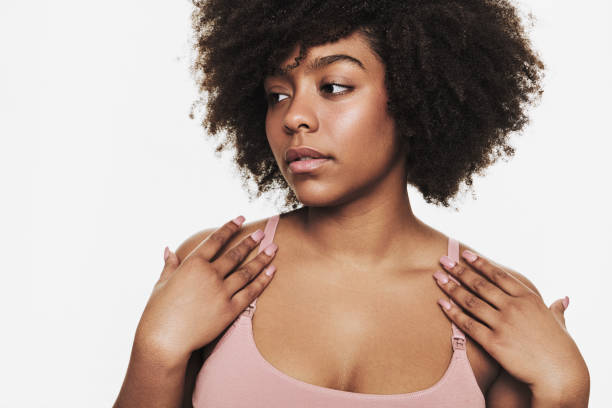
Breast health awareness involves recognizing what’s normal for your breasts to detect any changes early, including variations in skin color. While brown spots are usually benign, understanding their potential causes and seeking medical advice for any changes is essential for overall breast health.
Causes of Brown Spots on Breasts
1. Allergic Reaction
The skin on the breasts is sensitive, making it susceptible to allergic reactions to various products like detergents or fragrances. Contact dermatitis can lead to temporary brown patches and itching. Identifying and avoiding the allergen is typically the best method of treatment.
2. Lupus
An autoimmune disease, lupus can affect any part of the body, including the skin. Women of childbearing age are more likely to develop lupus, which can result in skin rashes on the breasts.
Along with skin changes, lupus can cause fever, joint pain, fatigue, and chest pain. Management of lupus requires a rheumatologist’s care to address symptoms and reduce flare-ups.
3. Postpartum Changes
Pregnancy and breastfeeding can cause hormonal changes that lead to color changes in the breasts, especially in the nipples and areolas. While large patches of discoloration are uncommon, they can occur and should be monitored.
If these changes persist for more than a few months, consulting with a healthcare provider is recommended.
4. Paget’s Disease
Paget’s disease is a rare form of breast cancer that starts with changes in the skin of the nipple. It typically affects women over 50 and is characterized by nipple discoloration, along with symptoms such as nipple discharge, itching, and thickening skin on the breast. If these symptoms occur, especially if you’re over 50, prompt evaluation by a healthcare professional is crucial.
RELATED: 5 Natural Remedies for Dark Spots on Brown Skin
5. Bruising or Hematoma
Brown spots on the breasts can result from bruising, which may occur from unnoticed injuries or trauma. A hematoma, which is a collection of blood under the skin, can also cause brown spots.
These spots may be tender to the touch and can take weeks to months to resolve. If the bruising is severe or causing significant pain, drainage by a healthcare professional may be necessary.
6. Seborrheic Keratosis
Seborrheic keratosis is a noncancerous skin condition common in older adults. These growths are usually brown, black, or light tan and can have a waxy, scaly appearance. While typically harmless, they can be itchy or irritated.
If a suspected keratosis bleeds often or doesn’t heal, it’s advisable to see a dermatologist, as it could be a sign of a precancerous lesion called actinic keratosis.
7. Inflammatory Breast Cancer (IBC)
IBC is a rare and aggressive form of breast cancer that can cause reddish or pinkish-brown spots on the breast. These spots may have a texture of dimpling or bumps and are often accompanied by swelling and a rash-like appearance. IBC tends to be painless but can feel tender.
Typically occurring in women younger than 40, IBC makes up about one to five percent of all breast cancers, according to the American Society of Clinical Oncology. Black women appear to develop inflammatory breast cancer more often than white women, the American Cancer Society reports, and it’s more common among women who are overweight or obese.
Treatment for Brown Spots
Treatment for brown spots on the breasts depends on the underlying cause:
- For allergic reactions, identifying and avoiding the allergen is key.
- Lupus requires treatment by a rheumatologist to manage symptoms and reduce flare-ups.
- Bruising or hematoma may resolve with time, but drainage may be necessary if causing pain or functional issues.
- Early detection is crucial for breast cancer. Any persistent changes should be promptly evaluated by a healthcare provider.
While brown spots on the breasts are often benign, it’s important to stay vigilant and seek medical attention for any changes that persist or worsen. Early detection and proactive care are essential for maintaining breast health.






